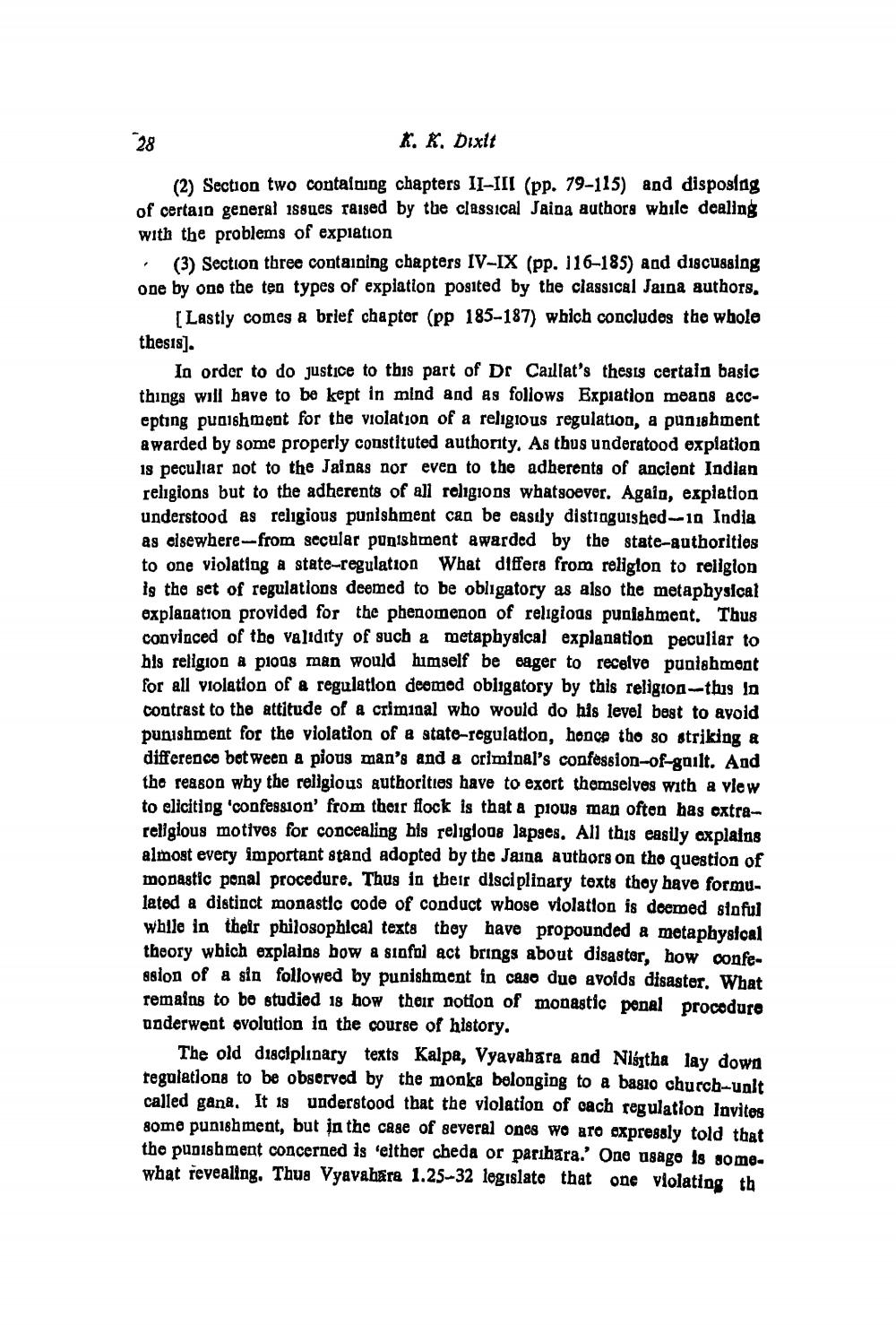________________
K. K. Dixit
(2) Section two containing chapters II-III (pp. 79-115) and disposing of certain general issues raised by the classical Jaina authors while dealing with the problems of expiation . (3) Section three containing chapters IV-IX (pp. 116-185) and discussing one by ono the ten types of expiation posited by the classical Jaina authors,
Lastly comes a brief chaptor (pp 185-187) which concludes the whole
thesis).
In order to do justice to this part of Dr Caillat's thesis certain basic things will have to be kept in mind and as follows Expiation means accepting punishment for the violation of a religious regulation, a punishment awarded by some properly constituted authority. As thus underatood explation 18 peculiar not to the Jainas nor even to the adherents of ancient Indian religions but to the adherents of all religions whatsoever. Again, expiation understood as religious punishment can be easily distinguished-10 India as elsewhere--from sccular punishment awarded by the state-authorities to one violating a state-regulation What differs from religion to religion is the set of regulations deemed to be obligatory as also the metaphysical explanation provided for the phenomenon of religious punishment. Thus convinced of the validity of such a metaphysical explanation peculiar to hls religion a pious man would himself be eager to receive punishment for all violation of a regulation deemed obligatory by this religion--this in contrast to the attitude of a criminal who would do his level best to avoid punishment for the violation of a state-regulation, hence the so striking a difference between a pious man's and a criminal's confession-of-gailt. And the reason why the religious authorities have to exort themselves with a view to eliciting 'confession' from their flock is that a pious man often has extrareligious motives for concealing his religious lapses. All this easily axplains almost every important stand adopted by the Jaina authors on the question of monastic penal procedure. Thus in their disciplinary texts thoy have formulated a distinct monastic code of conduct whose violation is deemed sinful while in their philosophical texts they have propounded a metaphysical theory which explalos bow a sinful act brings about disaster, how confeasion of a sin followed by punishment in caso due avoids disaster. What remains to be studied 18 how their notion of monastic penal procedure underwent ovolution in the course of history.
The old disciplinary texts Kalpa, Vyayahara and Niśitha lay down regulations to be observed by the monks belonging to a basio church-unlt called gana. It 18 understood that the violation of cach regulation Invites some punishment, but in the case of several ones we aro expressly told that the punishment concerned is “elther cheda or parihara.' One usage is some. what revealing. Thus Vyavahara 1.25-32 legislate that one violating th




